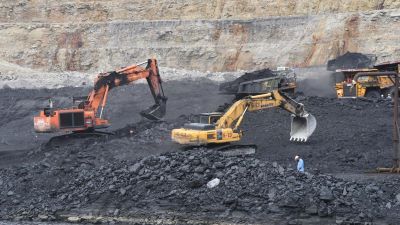Context
As India grapples with the looming spectre of electricity shortages, exacerbated by unpredictable weather patterns and a burgeoning economy, the discourse surrounding the root causes of these shortages warrants a closer examination. While a shortage of domestic thermal coal has often been cited as the primary culprit, a deeper analysis reveals a more nuanced reality. Despite the narrative of coal scarcity, the crux of the issue lies not in the availability of coal itself, but rather in the logistical challenges hindering its efficient transportation to power plants across the nation. This logistical bottleneck poses a significant hurdle in ensuring a reliable supply of electricity, particularly during peak demand periods such as the scorching summer months.
Logistical Challenges: A Critical Analysis
The narrative of coal shortages often overlooks the logistical complexities inherent in the coal supply chain. In August 2023, for instance, when the country experienced a substantial electricity shortfall, amounting to 840 million units, attributions to a poor monsoon and subsequent increased demand emerged. However, a closer examination reveals that the shortage accounted for a mere 0.55% of the overall demand for that month. Intriguingly, while over 30 million tonnes of coal lay available in mines during August and September, a mere 0.6 million tonnes of domestic coal could have sufficed to address the shortage, underscoring the logistical challenges rather than an absolute scarcity of coal. The Ministry of Power echoed this sentiment in a recent advisory, acknowledging that logistical issues within the railway network continue to impede the seamless supply of domestic coal to power plants across the nation.
Addressing the logistical conundrum presents a formidable task that cannot be remedied overnight. While efforts to enhance infrastructure and streamline transportation networks are underway, the immediate concern remains how to navigate shortages in the interim. Despite coal emerging as India's primary resource for meeting energy demands, the discourse often simplifies the solution to mere imports. However, such a perspective fails to consider alternative avenues and the complexities involved in the coal procurement process.
Navigating the Issue of Imports
The debate surrounding thermal coal imports further muddles the discourse on addressing shortages. While it's acknowledged that some level of imports may be necessary, particularly for blending with domestic coal, the extent to which imports are deemed indispensable remains contentious. The Ministry of Power's recent advisory, often misconstrued as a mandate for importing 6% of coal, warrants a more nuanced interpretation. Contrary to popular belief, the advisory serves as guidance rather than a binding directive, emphasizing the importance of monitoring coal stocks and advocating for blending based on requirements rather than imposing a fixed quota for imports.
Interpreting the advisory as a mandate carries significant economic implications, particularly in a landscape where coal accounts for over 70% of India's electricity generation. Mandatory blending of imported coal could substantially inflate variable costs, thereby burdening consumers with higher electricity tariffs. The repercussions of such a decision extend beyond immediate financial concerns, potentially perpetuating higher costs for an extended period. It's imperative that regulatory bodies exercise prudence and refrain from endorsing arbitrary mandates that may not align with the broader interests of consumers and stakeholders within the energy sector.
Generation and Location Dynamics
The discourse surrounding coal shortages must also account for the diverse landscape of power generation facilities across the country. Not all power plants face identical challenges, with location and generation capacity playing pivotal roles. Pit-head plants, situated in close proximity to coal mines, typically enjoy a more reliable supply of coal and are less susceptible to shortages. Conversely, plants located further away from mining regions often grapple with logistical constraints and are more prone to experiencing shortages during periods of heightened demand.
Acknowledging the heterogeneity within the power generation sector is crucial in devising effective strategies to address coal shortages. A blanket approach to coal imports fails to consider the unique circumstances of individual plants and regions, potentially exacerbating inequities in resource allocation and operational efficiency. As such, any discourse surrounding coal shortages must prioritize a nuanced understanding of the diverse dynamics at play, moving away from one-size-fits-all solutions towards tailored interventions that account for localized challenges and opportunities.
Conclusion
In conclusion, the discourse surrounding coal shortages in India necessitates a paradigm shift towards a more holistic understanding of the underlying complexities. While logistical bottlenecks pose a formidable challenge to the seamless supply of coal, simplistic narratives centered around imports fail to capture the intricacies of the issue. Regulatory bodies must exercise caution in interpreting advisories, ensuring that decisions align with the broader interests of stakeholders and mitigate undue economic burdens on consumers. Furthermore, a nuanced approach that accounts for the diverse landscape of power generation facilities is essential in devising effective strategies to navigate coal shortages. By fostering a more informed dialogue and embracing tailored solutions, India can overcome its energy challenges and ensure a sustainable and reliable power supply for all.
|
Probable Questions for UPSC Mains Exam 1. India's energy sector faces persistent challenges in ensuring a reliable supply of electricity, with coal shortages often cited as a primary concern. Analyze the logistical bottlenecks hindering the efficient transportation of domestic coal to power plants across the nation, and discuss the implications of such challenges on India's energy security and economic development.(10 marks, 150 words) 2. The Ministry of Power's recent advisory on thermal coal imports has sparked debates regarding its interpretation and implementation. Critically evaluate the implications of misconstruing the advisory as a mandate for importing 6% of coal, and discuss the role of regulatory bodies in safeguarding consumer interests while addressing coal shortages in India's energy landscape.(15 marks, 250 words) |
Source – The Hindu







